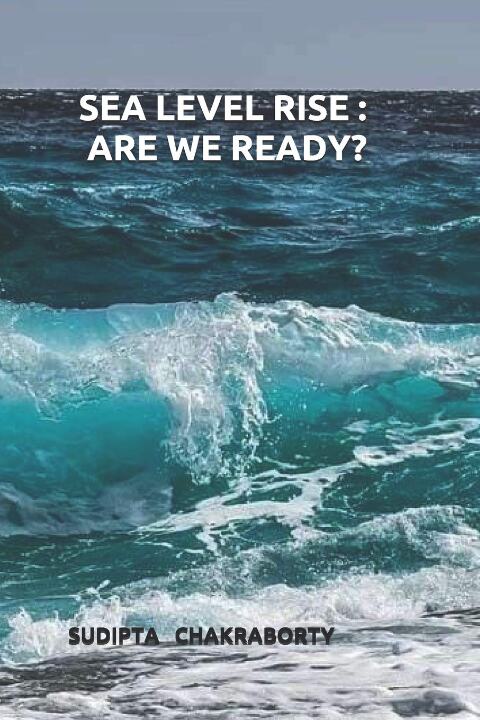A handbook on climate change
This well-structured book, besides putting the historical perspective alongside the prevailing gloom of climate change arena, tends to offer holistic solutions

Global warming, melting of glaciers, carbon emissions, greenhouse gases, sea level rise etc. are the most burning global issues of the 21st century. From young environmentalist Greta Thunberg to the US President, all are concerned with these critical problems. Thousands of papers have already been brought out. Discussions around environmental issues have become a continuous process — whether organised by global organisations like the United Nations or other institutions. Universities of different countries have already included these subjects in their academic curriculum. A simple google search will reveal a list of dozens of portals containing humongous information. Those search results are however normally specific to the query that has been entered.
Besides, there is an abundance of books on these issues, starting right from the 'Silent Spring' by Rachel Carson (1962). Most of the books are either textbooks or academic documentation and deal with any particular subject. Some fictions like Amitav Ghosh's highly acclaimed 'The Hungry Tide' (2004) are also available. Then there are government documents on these issues and even NGOs bring out their own reports based on field study. Irrespective of who prepares these, the documents are useful for availing updated data and specific information. Though these are undoubtedly useful for students, researchers, scholars and even policymakers but, at the end of the day, a layman's handbook of these interrelated subjects was largely missing.
Sudipta Chakraborty — a trained civil engineer who gained the experience of port management during his service spanning over four decades — came out with such a book during the pandemic. Chakraborty has done his MTech in Aerospace Engineering from IIT Kharagpur. He further studied at the International Institute of Infrastructure, Delft, the Netherlands. Given this background, Chakraborty is the right person to address the above-mentioned issues in such a fashion that could be easily comprehended by a common man. The title of the book is itself quite responsive — 'Sea Level Rise: Are We Ready'.
This well-structured book starts with the relationship between oceans and human civilization. In the normal course, the next chapters ought to explain climate and the changes it has gone through so far. Subsequent chapters deal with the impact of climate change on human civilization and the environment. It is observed that within the next 50 years, the bird population of North America will come down to the tune of one billion. Change in food habits of the Polar Bear due to the melting of glaciers is also an important observation. Further, the effect of sea-level rise on urban and forest spaces is dealt with in the book with pinpointed explanations.
While discussing this specific issue, the author refers to the knowledge of the rise of sea level in ancient times. Quoting a research paper, it is stated that seven thousand years ago, a village community on the coast of the present-day Gaza strip on the Mediterranian Sea was endangered by rising sea levels. The villagers needed to defend their houses. A stone wall was constructed along the coastline. But the Mediterranian Sea drowned the village along with the stone wall by sweeping inland. Villagers left the village. The ruins of the wall could be visited today. It is a 100-meter row of boulders that runs parallel to the ancient shoreline. According to the marine-archaeologists, it was the oldest known man-made coastal defence structure. This historical evidence clearly indicates that issues related to sea-level rise have been a matter of great concern since the early days of human civilization.
While citing examples of the effects of sea-level rise in different countries, the book refers to different methodologies used to combat the problem. Such positive references have drawn a new dimension for long-term planning.
The author has also identified the relationship between poverty and migration in a changing climate. The effect of greenhouse gases due to shipping, and the effect on sea and riverine ports is also dealt with in the book. Chakraborty has also explained the role of the environmentalist movement. Altogether it is a handbook of climate change and allied issues.
While describing the gloomy picture of climate change, the book draws a bright roadmap for the changed milieu. A new investment policy is suggested. Realignment of the habitation pattern, both for human beings and wild animals, would be the bare necessity in the new paradigm — the most positive message the book tends to provide.
Surprisingly, no publisher came forward to publish the book. In fact, the entire publishing industry is in doldrums due to the present pandemic. Besides, reading habits have also been changed due to the expansion of the e-platform. But ultimately, it is the domain of the publisher to bring out a book as an e-book or a hard copy. It is expected that after this dismal state of affairs, when normalcy will take place, this important book will be published in a professional design with an editorial touch to reduce too many quotes.
Views expressed are personal



